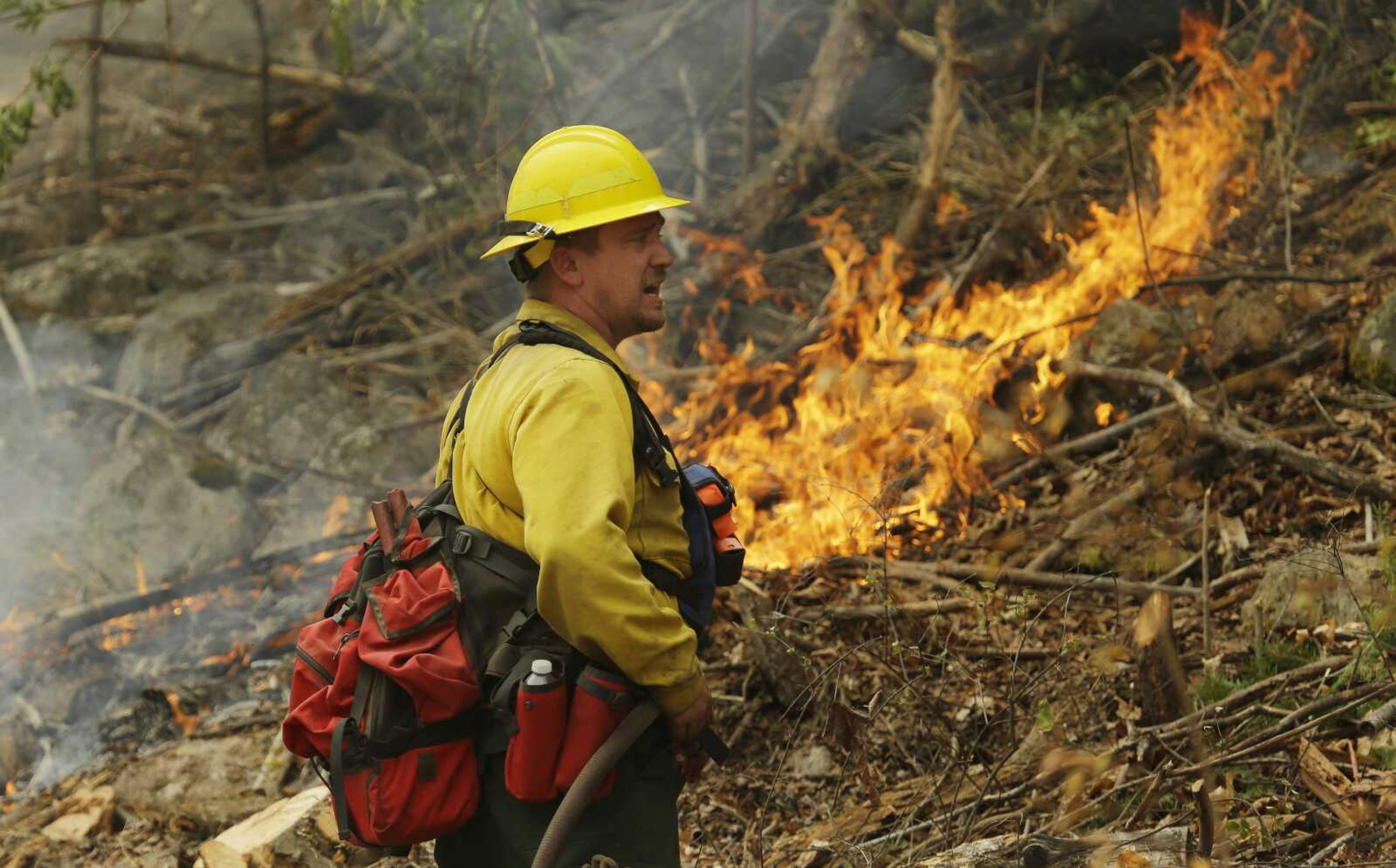Military activated to help fight Western wildfires
CHELAN, Wash. -- Wildfires are putting such a strain on the nation's firefighting resources that authorities have activated the military and sought international help to beat back scores of blazes burning uncontrolled throughout the dry West. The situation is so urgent that the National Interagency Fire Center in Boise, Idaho, this week called in 200 active-duty military troops to help contain roughly 95 wildfires. ...
CHELAN, Wash. -- Wildfires are putting such a strain on the nation's firefighting resources that authorities have activated the military and sought international help to beat back scores of blazes burning uncontrolled throughout the dry West.
The situation is so urgent that the National Interagency Fire Center in Boise, Idaho, this week called in 200 active-duty military troops to help contain roughly 95 wildfires. It's the first time since 2006 that the agency has mobilized soldiers for fire-suppression.
"Nationally, the system is pretty tapped," said Rob Allen, the deputy incident commander for the fires around the Cascade Mountain resort town of Chelan. "Everything is being used right now, so competition for resources is fierce."
The troops are all coming from the 17th Field Artillery Brigade at Joint Base Lewis-McChord near Tacoma and will be sent to a fire north of Republic, a town in central Washington, about 30 miles south of the Canadian border.
Fire managers at the center are able to enlist military help when there are not enough civilian firefighting teams, thanks to a 1975 agreement between the Defense, Interior and Agriculture departments.
The help can be crucial in particularly active years like this one, when the center's firefighting teams and equipment are fighting hundreds of fires across many states.
In the last two weeks alone, more than 1,500 square miles have burned in the Lower 48 states, center spokesman Ken Frederick said.
"It's like the fire season gas pedal has been pushed to the floor in a really short period of time, and that's stressed our resources," Frederick said. "And that's got us relying on help from resources we don't normally use."
The fires in the Pacific Northwest get top priority when it comes to allocating pinched resources.
More than 1,000 people are battling the massive fires near Chelan that have burned more than 170 square miles and destroyed an estimated 75 buildings. They are just some of the huge blazes raging in the West.
A lightning-sparked fire in Oregon's Malheur National Forest has grown to 63 square miles and destroyed at least 26 houses.
An additional 500 structures are threatened by the flames near the community of John Day, also in Oregon.
In the Northern Rockies, so many wildfires have ignited this month that officials are letting some that might be suppressed under normal circumstances burn because manpower and equipment are committed elsewhere.
The area experienced a normal fire season until last week, when a combination of drought, high temperatures and lightning-packed storms created new blazes across western Montana and Idaho.
As of Tuesday, at least 95 fires were burning in the two states, about 30 of them considered large, according to the Northern Rockies Coordination Center in Missoula.
That included a group of fires in northern Idaho that have scorched 90 square miles and destroyed 42 homes in the last several days, as well as a wildfire in the western part of the state that led about 120 residents to evacuate and others to prepare to flee near McCall.
California is doing well in terms of resources, despite a pair of massive blazes in the north.
Officials prepared for a drought-fueled fire season by bringing in several hundred more firefighters than in previous years. In Chelan, about 180 miles east of Seattle, flames burned through grass, brush and timber.
Air tankers established containment lines to keep the flames from reaching downtown, and utility workers replaced burned power poles and inspected wires.
No buildings have been lost in the Chelan fires in the past two days, officials said.
But nearly 1,000 people remained under mandatory evacuations.
On Tuesday, smoke was thick in the air of downtown Chelan. Particles of ash fell from the sky. Some residents wore surgical masks as they walked through town.
The firefighters sleep in the woods, get up every morning and work a full day, said Allen, the deputy incident commander.
"It's hot. It's dirty," said Allen, who usually works for the Bureau of Land Management in Alaska.
He said authorities were looking for all the resources they could muster.
"The military has been activated. We have National Guard here to help us out," Allen said, adding Canada loaned resources, and authorities also were talking to New Zealand and Australia.
Everyone is working to save Chelan, at the south end of Lake Chelan in the Cascade Range.
"Chelan is still at risk, but we have very significant amounts of structure protection," said fire spokesman Brian Lawatch. "The name of the game today would be going on offense."
The Chelan fires are about 30 percent contained, Lawatch said.
That includes deliberate burnouts in some areas, plus trying to direct the fire into previously burned areas or areas with little fuel.
Connect with the Southeast Missourian Newsroom:
For corrections to this story or other insights for the editor, click here. To submit a letter to the editor, click here. To learn about the Southeast Missourian’s AI Policy, click here.









